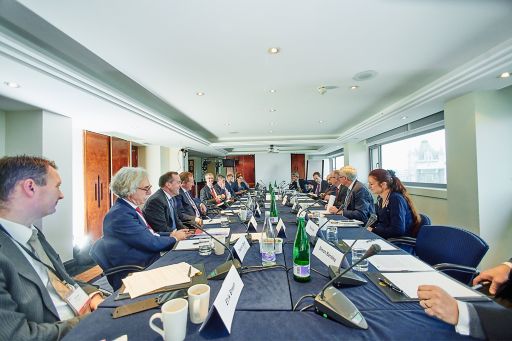Improving communication between stakeholders: Stakeholder perspectives
In the series of discussions that we held with investors, audit committee chairs, regulators and other stakeholders, the importance of communication was never very far away. And indeed, there was a clear recognition that it needs to be improved.
On the audit side, investors and others were looking for deeper information and insight into the judgments and considerations that the auditor had made. They would also welcome more forward-looking information — giving a view on what might lie ahead ‘through the windscreen’ rather than just the ‘rearview mirror’.
This has in part been addressed in recent years by the introduction and widening adoption of expanded auditor reports that give more information on risks and judgments than the long-standing pass/fail audit reports.
Convergence risk
However, despite the positive reception for these new reports, one challenge for auditors is to keep them fresh and avoid simply creating a ‘new boilerplate’. Some highlighted the risk that differentiation could narrow over time and the reports could ‘converge’ in the same place.
But the communication challenge goes much wider than just the audit and auditors. There was a healthy agreement that all parties need to communicate and engage with each other more.
Indeed, the subject of how to foster greater communication between audit committees and investors was the specific focus of one roundtable in London. There was agreement that ‘it takes two to tango’ — there is an onus on both sides to engage.
On the audit committee side, some chairs noted that while there was very little direct discussion, there was a lot more written dialogue now. But what would help audit committees is to have more feedback from investors on the information they provide and whether it is actually helpful to investors.
But perhaps the lack of response simply means that investors are getting what they need. Some investors admitted that there needs to be a ‘pull’ for them to discuss audit-related issues, perhaps as part of wider governance discussions, while also conceding that there is need among investors for a ‘rebalancing’ away from remuneration, which tends to be a subject that preoccupies them.
Whatever communication there is, there was agreement that it needs to be on targeted and specific issues, not just engagement for the sake of it.
Telling the whole story
Company reporting is clearly key to communication, and there was acknowledgment from many that the move towards more integrated reporting was positive. There is a need to marry good non-financial reporting with financial reporting, in order to tell the whole story.
However, participants acknowledged that companies can be reluctant to disclose too much in their reporting for fear of either giving away competitive advantage or due to litigation risks. There is still a tendency to tell the ‘good story’ but not all of the story.
Investors, though, want more information — and information that provides insight rather than just describes. They want to know how companies have handled risks and mitigated them, not just how they have defined them.

Non-GAAP measures
It is also important that non-GAAP financial measures (supplemental information) are reported clearly and that there is consistency over time. One issue is that companies sometimes change on a periodic basis the type of non-GAAP measures they provide.
There was debate over the extent to which auditors could or should provide wider assurance on non-financial and non-GAAP reporting — or at least the processes and systems through which such information is collected and collated. Clearly, there could be scope for auditors to do more here, but this is likely to be a subject for ongoing discussion to determine the parameters.
Better communication was also seen as a way to potentially combat investor short-termism and encourage a longer-term view. One challenge for companies is finding ways to give a real insight into the organization’s corporate culture, which is something investors are often keen to have — although this may come through more clearly from direct interactions with the organization.
Communication is in many ways the glue that holds the corporate system together. Exploring further ways to improve it will continue in the next phase of the Value of Audit.
All references to 'KPMG', 'us' and 'we' refer to KPMG's network of member firms.
Connect with us
- Find office locations kpmg.findOfficeLocations
- kpmg.emailUs
- Social media @ KPMG kpmg.socialMedia

